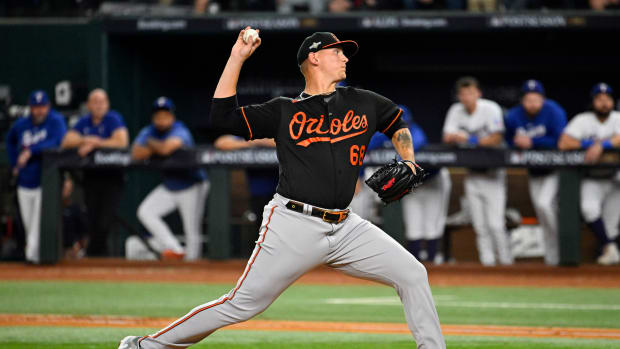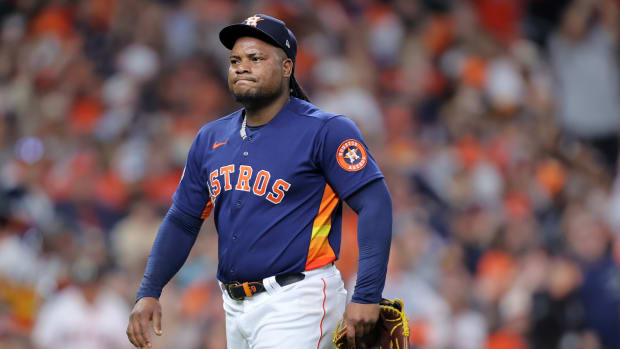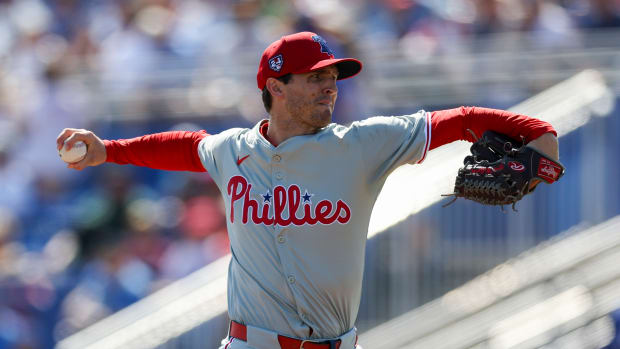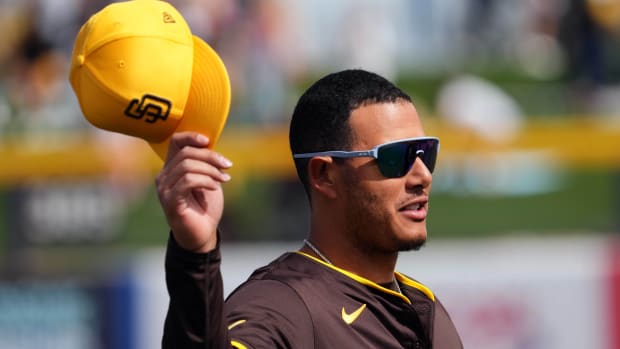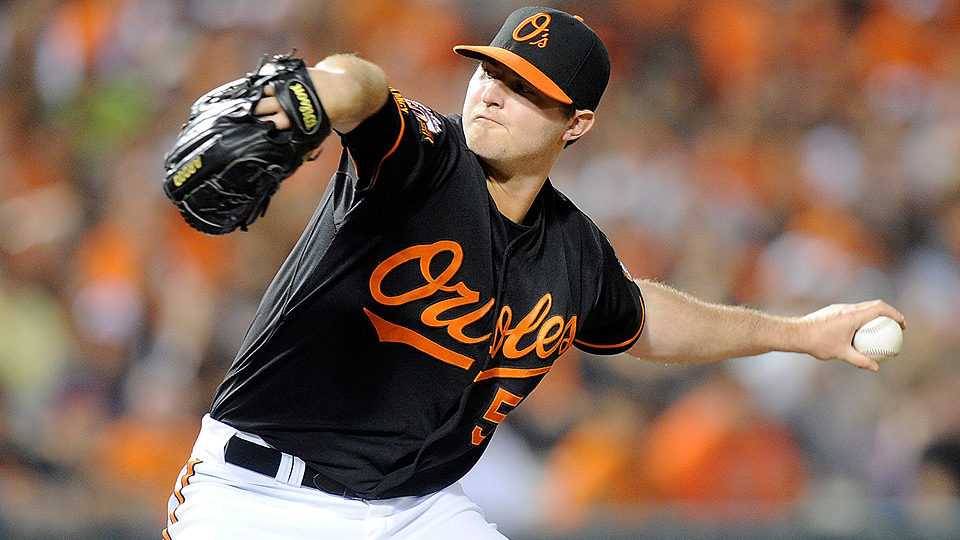
Defense, pitching have carried Orioles to top spot in AL East
Don’t look now, but the Baltimore Orioles have the third-best record in the major leagues and the largest lead of any of the six division leaders (five games over the Yankees and Blue Jays). Since May 31, more than half of the season to this point, the Orioles have had the best record in baseball, going 39-22 (.639) over that span, a game better than the consensus best team in baseball, the Oakland Athletics. All of that from a team that entered action on May 31 with a losing record, lost its All-Star catcher to Tommy John surgery in early May, and has scored just shy of four runs per game since July 1.
So how is it that the Orioles are so good? Has their success been some kind of fluke? The obvious impulse is to say that the Orioles have fattened up on their weak intra-division foes. There’s some truth to that: The Orioles have a .595 winning percentage against their own division, but they’re just one game above .500 against both the Blue Jays and Red Sox and have a negative run differential against the former.
As they did two years ago, the Orioles have a good record in one-run and extra-inning games. There’s considerable overlap there, but after filtering that out, they are 25-17 (.595) in those games. Typically, success in one-run games can be attributed largely to luck, but again, as was the case for the Orioles in 2012, it can also be traced to the quality of a team’s bullpen. Indeed, Baltimore’s relievers have combined to post the fourth-best bullpen ERA in the American League, behind only the Mariners, A’s and Indians. That unit has been led by the near-unhittable duo of Zach Britton and Darren O’Day, who have combined to post a 1.33 ERA on the season, and has recently been reinforced by the deadline addition of similarly dominant lefty Andrew Miller.
MLB Power Rankings: Pirates keep rising as playoff push continues
Britton, yet another of the Orioles' failed starting pitching prospects, has been a revelation as the team’s closer, generating more than three groundballs for every flyball and filling a role that was effectively vacant coming into the season. Default Opening Day closer
lost the job by mid-May, when his second consecutive blown save left him with a 6.60 ERA on the season. Since then, however, Hunter, who missed a couple of weeks with a groin strain, has posted a 2.10 ERA and hasn’t allowed a single home run. That change in closers occurred just before the Orioles turned their season around at the end of May.
One common thread that connects the performances of those relievers is good fortune on balls in play. Since moving out of the closer role, Hunter has posted a .222 BABIP, a dead match for Britton’s season mark, and O’Day’s has been .244, which is even better than his already-low .257 career mark. To that list you can add rightyBrad Brach, an offseason addition from the Padres, currently enjoying a .236 BABIP. Those numbers point to an underappreciated reason for the Orioles success: Team defense.
The Orioles have the fifth-best park-adjusted defensive efficiency (the rate of turning balls in play into outs) in the majors, and third best in the AL behind, again, Seattle and Oakland. Their infield defense in particular — with Manny Machado at third base, J.J. Hardy at shortstop, rookie Jonathan Schoop at second, and Chris Davis at first base — has been outstanding, and a hidden benefit of Steve Pearce’s mid-season hot streak (since gone cold) was the significant defensive upgrade he represented over Nelson Cruz, complementing Adam Jones in center and Nick Markakis in right. For anyone wondering why the Orioles have stuck with the 22-year-old Schoop at second base this long despite his .211/.251/.328 batting line on the season, the answer is his glove.
Ballpark Quirks: How warehouse came to forefront at Camden Yards
Similarly, 28-year-old rookie catcher Caleb Joseph has excelled behind the plate in Wieters' stead. Joseph leads the majors in caught-stealing percentage, having thrown out 49 percent of the men who have tried to steal against him, and has excelled at pitch-framing as well. Joseph is also coming around with the bat; on Thursday night, he homered in his fourth straight start and he has now hit .292/.329/.569 since July 1 and .256/.304/.480, a very respectable line for a catcher, since May 31, the pivot point of the Orioles' season. That recent power outburst is no fluke: Joseph, who was drafted by the Orioles in the seventh round back in 2008, hit 22 home runs for Double-A Bowie last year.
Buoyed by that strong team defense and Joseph’s excellent receiving, the Orioles’ rotation has been rounding into shape, as well. After an extremely rough patch in late May and early June, Chris Tillman has a 2.38 ERA in his last 11 starts dating back to June 10. Kevin Gausman has gone 6-2 with a 3.26 ERA in ten starts since becoming a regular part of the rotation in early June, and if you eliminate his disaster start in his first turn this season, Miguel Gonzalez has posted a 3.32 ERA in his other 18 starts.
Gausman’s emergence has meant that the Orioles’ rotation actually improved in the wake of Ubaldo Jimenez’s ankle injury. But the Orioles are heading into dangerous territory with that pair, as Jimenez is due to return to the rotation this weekend against the Cardinals on Saturday, originally Gausman’s turn in the rotation. That has led some to speculate that the 23-year-old Gausman could be headed to the bullpen.
The fourth-overall pick in the 2012 draft, Gausman is in just his second full professional season and fell one out shy of 130 innings last year between the majors and minors. However, he has thrown just 107 1/3 innings this year. If he continues to average right around six innings per start over the remainder of the season, as he has done thus far, he’ll exceed last year’s innings total by roughly 30, which is a completely acceptable increase for a young pitcher, and a necessary one if the Orioles want him to be a part of their rotation throughout 2015.
What complicates the matter is that Jimenez has clearly been the Orioles' worst starter this year, but he’s on the first year of a four-year, $50 million contract, and the Orioles may be unwilling to admit their mistake so early or to sour their relationship with a pitcher to whom they owe nearly $40 million over the next three years.
One alternative plan could see the Orioles use a six-man rotation, something they were effectively doing before Jimenez got hurt, in part through a creative use of player options. Indeed, don’t be alarmed if Gausman, who might start Sunday, is optioned again. Chances are he’ll be back before his next turn in the rotation comes. It’s the move to the bullpen that could prove to be the more significant exile. Fortunately for the Orioles, their AL East lead has given them some room to experiment.































